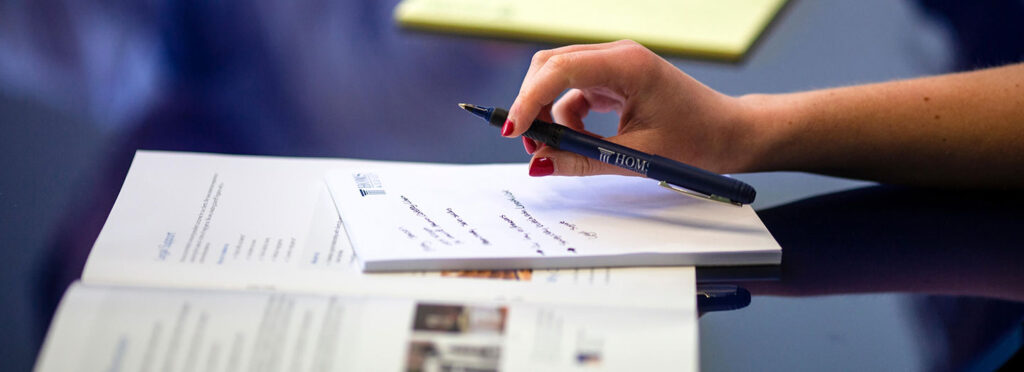It is difficult to plan for the future when you are facing the emotional distress of marriage breakdown and divorce. It is helpful to have an expert solicitor to guide you through the process and ensure your best interests are taken into account.
Divorce is a legal process that ends a marriage. Unlike separation, a decree of Divorce requires court approval and allows either spouse to remarry. To secure a divorce, both spouses must meet the following conditions:
- There must be no reasonable prospect of reconciliation.
- The spouses must be living apart for two out of the previous three years.
- Proper provision must be made, based on the income and earning capacity of both spouses, each party’s financial requirements and obligations, and the standard of living that both spouses have become accustomed to. The courts will also consider the needs of any dependent children.
- At least one spouse must be an Irish resident.
Out of Court Divorce
Many financial aspects of a divorce may be finalised without having to go to court. These kind of settlements can often be reached through a process such as:
- Negotiation
- Mediation
- Collaborative divorce
- Arbitration
International divorce
If you are seeking a divorce and you or your partner live or work outside Ireland, it is important to get expert advice from a family law solicitor. The following considerations can make international divorce cases complex:
- Family law differs substantially between countries.
- Selecting the jurisdiction where your case is heard can have major implications for the outcome of your divorce.
- Timing is an important element in international cases.
- Even if your divorce is processed in Ireland, you may need to deal with foreign legal systems to manage overseas assets and childcare arrangements.
Recognition of Foreign Divorces
High Net Worth Divorce
Divorce can be particularly complex if you or your spouse is wealthy. Having to manage and protect significant finances, properties, and assets, as well as children, custody and maintenance adds to what may already be a stressful and distressing experience. An experienced solicitor will help you with issues including:
Maintaining a spouse and children, including considerations around school fees and lifestyle choices
- Properties
- Pensions
- Trusts
- Business assets
- Personal assets
- Domestic and overseas assets
- Inherited wealth
- Freezing injunctions if there is a fear that assets may be placed out of the court's reach.
If you or your spouse has international links, you may also need to consider which country is best for processing your divorce.
Annulment solicitors
Sometimes a marriage can be ended through an annulment (nullity) rather than a divorce. Very specific conditions must be met to obtain an annulment, and even if you meet them, your financial, business and childcare arrangements will still need to be finalised. An annulment can be sought at any time after a wedding, but cases can be complicated, and you may have to go to court to give evidence.
Annulment means that a valid marriage never existed. Two types of marriages may be annulled or cancelled – void marriages and voidable marriages.
If your marriage is void, it is deemed to have never taken place. Technically, you don’t need to go to court to obtain a decree of annulment, but, it is advisable to obtain a court order declaring that your marriage is annulled to eliminate any doubt.
If your marriage is voidable, it is deemed to be a valid marriage until a decree of annulment is made.
Divorce after a brain or other serious injury
The massive strain that a brain injury or other life changing injury can place on a marriage means that many couples will break up. Divorce can be complex and stressful under any circumstances, but it can be particularly difficult when a significant personal injury award for future care needs must be taken into account. You will need expert legal advice to ensure a divorce settlement that is fair for you and your ex-partner. Your solicitor can help you with issues including:
- Safeguarding your personal injury compensation
- Maintaining care requirements after your divorce, especially if your ex-spouse was involved in your care
- Agreeing maintenance or your children
- Making provision for care you may need when seeing your children
- Claiming further compensation after divorce – this might be possible in certain cases
- Safeguarding your property rights for a home that has been adapted for your needs
Divorce Mediation
Divorce mediation is a way of agreeing financial and child-related issues without having to go to court. An impartial specialist called a mediator will help you to agree a settlement and you may not have to negotiate with your ex-spouse at all. The advantages of divorce mediation over court processes include:
- Speed – mediation is usually completed within six months; divorce can take years.
- Cost – mediation is usually cheaper.
Divorces are not easy, but your family law solicitor will guide you through mediation to find an amicable solution that satisfies both of you.
Divorce & Your Finances
The financial aspects of divorce can be challenging, but it is important to secure a satisfactory financial settlement to safeguard the future for you and your family. A financial settlement is a legally binding decision on the division of assets between both spouses after a marriage ends. It can include:
- Property rights
- Savings
- Shares
- Pensions
- International property
- Liabilities for debts
- Custody of children, as well as maintenance and school fees.
It is important to have the best legal advice when dealing with financial decisions with potentially life-changing consequences.
Business assets on divorce
If you and your spouse built up a business during your marriage and used the income from it to support your family, this will be taken into account together with your other assets. It is irrelevant whether the other partner was ever directly involved in the business. Usually, the court will attempt to find a settlement that allows the business to continue, but options that the court could consider include:
- The other spouse receives Income from the business as spousal maintenance
- A lump sum is paid to the other spouse
- The other spouse receives a share of the business
- Business property or shares are sold to maintain the other spouse
- The other spouse receives a share of the future growth of the business
Collaborative divorce
Divorce does not have to be confrontational. Collaborative divorce is a process that takes place out of court and involves you, your former partner, and solicitors working out an agreement together. This process can be used for both financial and child-related arrangements following the divorce. Collaborative divorce could be the optimal solution for you if:
- Both you and your partner want to cooperate on a solution
- You are in a position to discuss issues in a productive manner
- You can speak honestly about issues involved in the divorce
You both sign a contract confirming that you will reach an agreement and you engage in a series of roundtable discussions with solicitors representing each party’s interests. Once a financial settlement has been agreed, it becomes part of a court order or separation agreement, which can be legally binding.
Coping with divorce
If you can communicate constructively with your ex-partner, your divorce will be cheaper, less stressful, and quicker to finalise. It can be difficult to control your emotions when your marriage has broken down, but you need to remain as calm as possible when discussing the practical details of it with your former partner. Being difficult or obstructive will end up causing you more problems, costing you more in legal fees and making your divorce take longer. It may also make your former spouse less open to negotiating with you later on and can have long-term effects on your children.
Remember that other family members or new partners should behave reasonably towards your former partner too. Their behaviour could make your ex less willing to negotiate with you.
If your former partner is hostile towards you, or unwilling to cooperate, you should not respond in the same way. Seek legal advice from your solicitor instead.
If it is simply impossible for you to deal with your former partner in person, you may be able to go through the divorce process without seeing them or speaking to them. Your solicitor can communicate on your behalf, so you never have direct contact with them.
Inheritance & Divorce
Assets inherited by one spouse are generally not considered assets of the marriage—even if they have been transferred subsequently into both parties’ names. If, however, the inherited asset becomes the family home, it will be treated as an asset of the marriage and divided accordingly.
Note: Although inherited assets may not be considered assets of the marriage, they are considered when determining each party’s overall wealth and requirements.
Considering a divorce? Contact us to pursue the best possible outcome in your unique situation.


